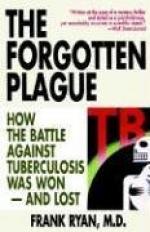|
This section contains 1,141 words (approx. 4 pages at 300 words per page) |

|
Tuberculosis is a serious infectious disease caused by the rod-shaped bacteria, Mycobacterium tuberculosis, which lodge in the lungs and destroy lung tissue. Sometimes called consumption, or simply TB, tuberculosis is usually transmitted from person-to-person by infected airborne droplets as the bacteria have no means of locomotion on their own. Once the bacteria invade the lungs, the body's immune system sends out white blood cells which build walls of fibers around the bacteria to keep them confined, forming small, hard lumps known as a "tubercles." Once the body has formed tubercles to encapsulate the bacteria, the primary infection may be contained and, although the person will always test positive for the TB bacteria, the disease itself may not develop. Later in life, if the walls containing the germs are broken down, the lungs once again become infected. If the immune system is initially unsuccessful in walling off the germs...
|
This section contains 1,141 words (approx. 4 pages at 300 words per page) |

|


